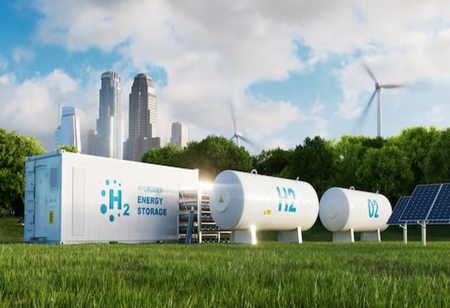
Hydrogen is critical to reaching worldwide net-zero emissions by 2050. In light of the impending COP 28, Prime Minister Narendra Modi stated India's goal of reaching net zero emissions by 2070 at the United Nations Framework Convention on Climate Change (COP 26) in November 2021.
Furthermore, the National Green Hydrogen Mission is aligned with India's ambitious aspirations to create 5 million metric tonnes (MMT) of hydrogen by 2030, with a budget of $2.36 billion (Rs. 197.4 billion). The mission promotes decarbonisation and self-sufficiency. The race for dominance in electrolyzer production is critical to developing India's green hydrogen ecosystem and transitioning to a clean energy economy. The recently implemented Production Linked Incentives (PLI) under the SIGHT programme act as a catalyst, leveraging India's labor and cost structure advantages over China. This establishes India as a possible worldwide hub for electrolyzer manufacture, reflecting China's supremacy in solar equipment manufacturing, with China producing 85% of global solar cells by 2021.
The Optimal Condition
India's cost-effective structure, along with the pervasive China plus one mindset, lays the groundwork for the country's rise as a worldwide electrolyzer manufacturing hub. As the world's largest democracy and the world's most populous country, India shares a democratic culture with the United States, the European Union, and Australia. New Delhi is well-positioned to take world leadership in the production and export of green hydrogen. Collaboration through the US-India Hydrogen Task Force might strengthen hydrogen technology, lowering production costs and boosting its utility in the energy portfolio.
Initiatives such as the New and Emerging Renewable Energy Technologies Action Platform (RETAP) under the United States-India Strategic Clean Energy Partnership (SCEP) enable collaboration with premier research and development (R&D) institutions in both the United States and India. RETAP seeks to expedite critical hydrogen technologies, with the goal of establishing India as a research and development hub for electrolyzer manufacturing. To boost its strategic presence in global value chains, India must expand on present policies such as the National Green Hydrogen Mission and the PLI under the SIGHT programme.
Overcoming Hurdles
Critical minerals are essential for the production of electrolyzers, but India is fully reliant on imports, while China has a global monopoly. Though exploratory initiatives are now underway in four states, namely Madhya Pradesh, Arunachal Pradesh, Himachal Pradesh, and Kerala, guaranteeing a sufficient supply is critical in order to manufacture enough electrolyzer to make 5MT hydrogen by 2030. Joint exploratory ventures with the United States provide a strategic solution for securing key minerals, which are vital for electrolyzer manufacturing and meeting ambitious hydrogen targets.
A Move Towards Sustainable Energy Initiatives
The recently concluded Mineral Security Partnership Principals' Meeting in London, which intended to develop secure and responsible global essential mineral supply chains, was recognised in the Joint Statement on the Fifth Annual US-India 2+2 Ministerial Dialogue in New Delhi. The dialogue, which represents a significant step forward, reinforces the shared commitment to building secure and accountable key mineral supply chains. Furthermore, American backing for the International Energy Agency (IEA) and attempts to facilitate India's IEA membership are highly aligned with supporting global secure energy transitions. This recognition within the bilateral conversation emphasizes both countries' joint desire to address crucial mineral constraints and support global sustainable energy initiatives.
Glorifying Sub-Continent Further
The scalability of hydrogen-powered applications in industries such as industry, transportation, and power generation has transformative potential for India's developing economy. The adaptability of hydrogen allows it to be used in a wide range of applications, from car fueling to delivering clean energy in industrial operations and power generation. This scalability, combined with India's intention to become a global leader in electrolyzer manufacturing, represents a once-in-a-lifetime potential for economic growth and technological innovation.
Leading Global Hydrogen Economy
The attractiveness of India for technology and foreign investment in this industry will be critical. More than $10 trillion in additional investments will be required to achieve India's objective of net zero emissions by 2070. Increasing Foreign Direct Investment (FDI) in this area will necessitate stronger capacity development, more investor trust, and improved systemic efficiencies. As technological and geopolitical trends affect global energy markets, India's transparent and quick policy and regulatory responses will be critical, coordinated with stakeholders from the public, industry, and the Central and State governments. These policies will position India as a key player in the rapidly expanding global hydrogen economy.
Finally, India's quest of dominance in electrolyzer manufacturing and hydrogen generation has a transformational potential in the global energy scene. Collaboration with the United States not only strengthens domestic programmes, but also positions India as a significant player in global hydrogen markets. India might emerge as a forerunner in the clean energy revolution by bolstering legislation, leveraging technology collaborations, and solving essential resource constraints, contributing considerably to a sustainable future for its billion-plus people.

